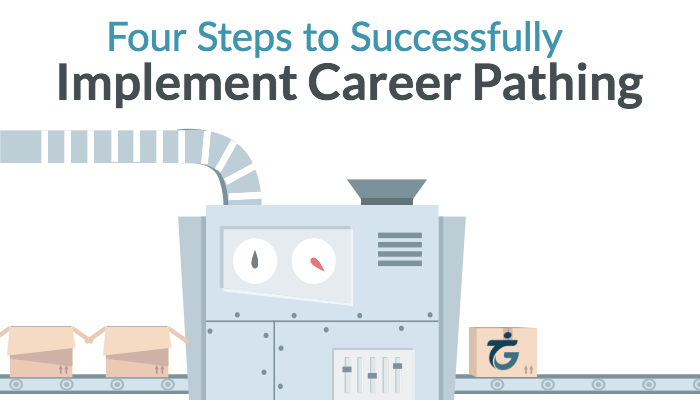Career Pathing in 2025: What It Is, Why It Matters, and a Guide to Success
Career pathing is how an employee charts a course for career development inside a particular organization. It involves identifying vertical and lateral opportunities for progression while understanding the skills, experiences, and competencies necessary for success in each role. A well-structured career pathing framework improves employee engagement and strengthens workforce retention.
What Exactly Is Career Pathing?
Essentially career pathing is about helping employees navigate their career growth within an organization, finding both vertical and lateral opportunities to advance. It emphasizes the skills and competencies needed to thrive in new roles. So, why is career pathing important? Well, it offers employees a clear roadmap for growth, which can lead to higher job satisfaction and better retention rates. When people see a path for their own development, they often feel more engaged and motivated, which ultimately benefits the entire organization.
To define career pathing, it’s about creating transparent pathways within a company that encourage employees to grow and explore new opportunities, whether that’s moving up the ladder or transitioning to a different role to broaden their skill set. Let’s look at some career pathing examples to see how this process can facilitate career advancement.
What Is the Difference Between Career Pathing and Career Mapping?
Career pathing focuses on providing employees with a structured plan for progression within a company. It defines career pathing as a long-term process that aligns individual aspirations with business needs. Conversely, career mapping takes a broader approach by analyzing potential career options based on skills, industry trends, and external opportunities. While career mapping explores possibilities across organizations, employee career pathing is tailored to internal mobility within a single company.
Why Is Career Pathing Important?
Career pathing is an important factor in improving employee satisfaction and workforce stability. Implementing an internal process helps companies retain top talent while fostering continuous learning and development. Employee career pathing is essential for fostering an environment where workers envision a future within the company. By offering structured growth pathways, it enhances job satisfaction and helps employees to invest in their development.
Reduces Turnover by Demonstrating Career Potential
Employees often leave when they feel stagnant in their roles. Career pathing provides clear direction on progressing within a company, reducing turnover by giving employees a roadmap for future growth. Employees gain confidence in their potential when they see career-changing examples of how others have advanced.
Drives Employee Growth and Business Performance
A strong career development path ensures employees continuously enhance their skills and competencies. As employees grow, their commitment to hitting business objectives increase. This alignment between individual and organizational goals leads to greater innovation, efficiency, and profitability.
Creates New Opportunities for Internal Recruiting
An effective career pathing framework enables organizations to identify and develop internal talent for key roles. Businesses can nurture existing employees instead of relying solely on external hiring, leading to faster transitions and reduced hiring costs. Internal recruiting also improves morale, as employees feel valued when their career aspirations are supported.
A Deeper Drive on Employee Retention
Unlike the past, today’s workers desire far more than a paycheck and benefits. They want personal and professional fulfillment. They want to learn and grow in a position that truly enables them to utilize their strengths. According to Gallup’s most recent State of the American Workplace report, if they feel they can’t do this within their current companies, they feel little hesitation to leave them. Two of the most common reasons employees leave a job are a lack of career growth opportunities and a feeling their current job is a poor fit for them.
Career pathing addresses both concerns. An effective program offers clear insights into skill gap shortages and provides resources to address those gaps. It also includes detailed information on various paths for advancement. Together, this ensures opportunities for growth, learning, and fulfillment are available – and readily accessible – to each employee in an organization, from entry-level to upper management. When 51% of employees are searching for new jobs and/or watching for new openings, this keeps your high-potential employees where you want them – with you.
Succession Planning and Longevity With Career Pathing
Successful companies identify and coach high-potential employees across various roles and departments to take over key positions. They don’t focus only on those employees in direct line for promotion. This helps companies identify the employees best suited for key positions and the skills and training those employees need to excel. This enables organizations to move high-potential employees into key positions effectively, with as little downtime as possible, which helps cement organizational longevity.
Productivity and Profitability
Lost productivity from disengaged employees costs U.S. employers between $483 billion and $605 billion annually. This helps boost employee engagement, helping bring an organization’s engagement numbers far above the 33% average. (In some instances, as high as 70%, according to Gallup.) With engagement, productivity rises, and profitability soon follows due to fewer turnover costs, fewer missed days, more positive customer interactions, and less employee theft. Recent research shows that employees within the top quartile of engagement are 17% more productive and sell 20% more than employees in the bottom quartile. They also are 21% more profitable and miss 41% fewer work days.
How to Help Managers Develop Better Career Paths for Their Team
Managers play a vital role in shaping the career pathing process. They should guide employees in identifying strengths, assessing skill gaps, and recommending learning options. Encouraging regular coaching discussions and providing access to mentorship programs fosters a culture of growth.
Chart the Course to a Better Career Path
With a structured approach, businesses can retain top talent and drive long-term success. Employees gain clarity on their career development path while organizations build a more agile and future-ready workforce.
The evidence is clear: An effective career pathing program empowers employees by giving them the insight, motivation, and guidance they need to set goals and propel themselves toward success. Engagement rises. In turn, empowered and engaged employees bolster company profitability and ensure long-term financial success. Building an effective program should be a top priority.
For information on how to best create a career pathing program, visit our career pathing software page or browse our Learning Center for webinars and other content. Ready to get started? Request a demo today!
F.A.Q’s
What is the meaning of career pathing?
To define career pathing, is the process of identifying the skills, experiences, and jobs to advance from one position to another. It helps employees align individual career goals with business needs.
What are some career pathing examples?
An example of career pathing is a software engineer advancing to a senior software engineer role, then to a software architect, and eventually becoming a Chief Technology Officer (CTO). Along the way, the individual acquires new technical skills, leadership experience, and industry knowledge to support their progression.
What is the career pathing strategy?
A career pathing strategy outlines structured progression pathways that show employees how one role is connected to another. For career pathing to work, organizations need a clean job catalog and career leveling system so that employees can chart a path for their existing job to a realistic next step.
What are the four types of career paths?
- Vertical Career Path – Traditional career growth, moving up the ranks (e.g., Junior Analyst →, Senior Analyst → Manager → Director).
- Lateral Career Path – Moving sideways within the organization to gain different skills and experiences (e.g., transitioning from marketing to sales).
- Dual Career Path – Allows employees to advance in technical or specialist roles without moving into management (e.g., Principal Engineer vs. Engineering Manager).
- Alternative Career Path – Non-traditional career movements, such as job rotations, project-based work, or entrepreneurship.
How do I figure out my career path?
To determine your career path:
- Assess your skills, interests, and values.
- Research industries and roles that align with your strengths.
- Gain experience through internships, projects, or networking.
- Seek mentorship and professional development opportunities.
- Set short-term and long-term career goals and create an action plan.
What are the six career personality types?
According to John Holland’s theory, the six career personality types are:
- Realistic (Doers) – Prefer hands-on, physical work (e.g., engineers, mechanics).
- Investigative (Thinkers) – Enjoy research and problem-solving (e.g., scientists, analysts).
- Artistic (Creators) – Thrive in creative and unstructured environments (e.g., designers, writers).
- Social (Helpers) – Excel in interpersonal roles (e.g., teachers, healthcare professionals).
- Enterprising (Persuaders) – Are natural leaders and influencers (e.g., entrepreneurs, salespeople).
- Conventional (Organizers) – Prefer structured, detail-oriented tasks (e.g., accountants, data analysts).
The 2025 Guide to Career Pathing Implementation & Steps
There are several reasons why companies have not implemented career pathing: Years of traditional employee processes; resistance to changing those processes; fear of employees expecting advancement once they have a career path; belief that these solutions are costly and time-consuming; and expecting implementation will be complex and resource-intensive. In reality, understanding the steps involved in implementing a successful career pathing plan helps ensure a smooth transition for the company, rapid implementation time and immediate as well as long-term ROI.
Improve Company Performance with Career Pathing
Four-and-a-half years. That’s the approximate length of time the average employee stays at one job. Younger employees hop more often, however, with most leaving a mere two years after hire. With disengagement rates topping 71.1% in the Millennial workforce, this is hardly a surprise.
Fixing Stuck: Engaging Employees With Career Pathing
Lack of engagement is a wide-spread problem according to numerous studies, with anywhere from a fifth to 84% of employees claiming to be actively unhappy at work. The vast majority of these employees are also considering or have considered quitting. Desire to “move up the ladder” and “lack of opportunity for advancement” were cited as major reasons for this desire by 20-30% of respondents in one study. In fact, according to that same study, the vast majority of employees feel “stuck” in their careers, with less than 25% able to see a clear career path in their current job.


